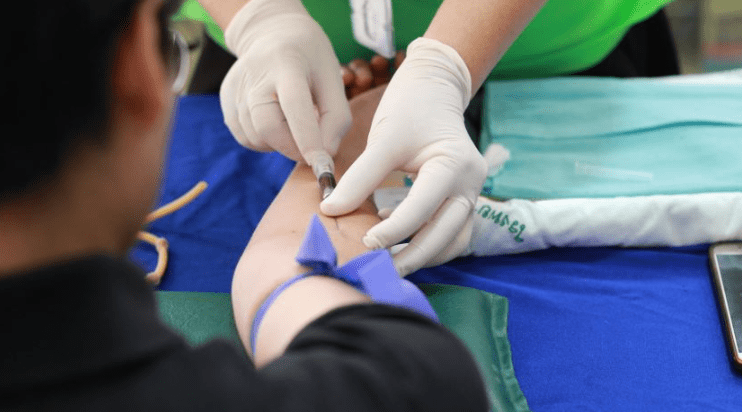The U.S. medical tourism market has become a prominent segment of the global healthcare industry, driven by significant growth and innovation. It leverages the country’s world-class healthcare infrastructure, highly skilled medical professionals, and advanced technological capabilities.
A comprehensive report from Coherent Market Insights examines the market landscape from 2025 to 2032, analyzing market share, growth projections, competitive dynamics, geographic trends, and investment opportunities. The study provides valuable insights for entrepreneurs, investors, researchers, and policymakers.
The report highlights the increasing attractiveness of the U.S. as a destination for medical tourists seeking high-quality specialized treatments and advanced wellness services. This expansion is fueled by global demand for personalized healthcare, reduced wait times, and access to cutting-edge procedures that may be unavailable or costly elsewhere.
Market Size and Growth Outlook
In 2024, estimates place the U.S. medical tourism market between USD 8.7 billion and USD 29.5 billion, reflecting variations in data sources and market definitions. Projections suggest a strong compound annual growth rate (CAGR) of 6% to over 13% from 2025 into the early 2030s. This growth is expected to drive the market value to between approximately USD 50 billion and USD 75 billion, highlighting robust domestic demand alongside rising international patient inflows.
Key drivers of this expansion include the U.S.’s growing global reputation for clinical excellence, availability of highly specialized medical services, and a sophisticated healthcare regulatory framework that ensures patient safety and quality. The presence of internationally accredited hospitals, such as those certified by Joint Commission International (JCI), further strengthens the U.S.’s appeal as a trusted destination for medical tourism.
Key Market Drivers and Opportunities
Several factors are driving the growth of the U.S. medical tourism sector. One major factor is healthcare cost dynamics. While the U.S. offers advanced medical technology and expertise, domestic procedures can be expensive and sometimes involve long wait times. This has led some American patients to seek treatment either at specialized domestic facilities catering to international standards or abroad in more affordable countries. At the same time, international patients are increasingly drawn to the U.S. for complex surgeries, oncology care, cardiovascular procedures, orthopedic treatments, and cosmetic surgeries, attracted by the superior quality, infrastructure, and technological capabilities.
Technological innovations such as telemedicine, remote patient monitoring, and AI-enabled diagnostics are enhancing the accessibility and coordination of care between international patients and U.S. healthcare providers. Furthermore, hospitals and facilitators are offering comprehensive medical travel packages that include treatment, accommodation, transport, language support, and post-operative care, improving the overall patient experience.
Additionally, growing awareness of healthcare quality, strict regulatory standards, and the availability of personalized care plans are supporting the sector’s growth. The U.S. healthcare system’s emphasis on patient-centered care further boosts demand, appealing to individuals seeking customized treatments and superior outcomes.
Challenges Facing the Market
Despite strong growth prospects, the U.S. medical tourism market faces several challenges. High treatment costs continue to be a barrier for some patient segments. Additionally, navigating complex insurance systems and visa regulations can create procedural obstacles for international patients. The lingering effects of global health crises have further highlighted the importance of stringent infection control and safety measures, adding operational complexity.
Competition from emerging medical tourism destinations in Asia, Latin America, and Europe presents more cost-effective alternatives, attracting price-sensitive patients and pushing the U.S. market to continually innovate and differentiate through quality and advanced technology. The sector also faces ethical considerations, including patient privacy, equitable access, and coordination with local healthcare systems.
Regional Insights and Competitive Landscape
North America, led by the United States, holds a dominant position in the global medical tourism market, supported by a concentration of top-tier hospitals, specialized treatment centers, and extensive research institutions. Many U.S. hospitals have developed international patient programs to improve access and enhance service delivery.
Renowned institutions such as the Mayo Clinic, Johns Hopkins Hospital, Cleveland Clinic, Cedars-Sinai, and Massachusetts General Hospital exemplify the country’s high clinical standards, attracting a significant number of international patients each year. These organizations invest heavily in advanced research, multidisciplinary care teams, and state-of-the-art surgical procedures, reinforcing the U.S. as a premier destination for medical tourism.
Strategic Insights for Stakeholders
Entrepreneurs, investors, and healthcare providers seeking to leverage opportunities in the medical tourism market must stay attuned to the evolving competitive landscape, patient preferences, and emerging technologies. The adoption of digital health solutions—such as AI-driven diagnostics, virtual consultations, and blockchain-based patient records—can improve operational efficiency and enhance patient engagement.
Risk assessments and economic analyses provided in the market report support informed decision-making regarding investment size, geographic focus, and service diversification. Evaluating project costs and projected ROI is critical for strategic planning, especially for new healthcare facilities and travel facilitation services targeting medical tourists.
Sustainability and Innovation
Sustainability is becoming increasingly important in medical tourism, with initiatives aimed at reducing environmental impact while maintaining ethical and equitable care. Innovation goes beyond clinical advancements, encompassing digital platforms that streamline patient experiences, enhance communication, and optimize resource management.
Integrating sustainability and innovation will help ensure the market remains resilient and adaptable to evolving regulations, technological disruptions, and shifting patient expectations.
Conclusion
The U.S. medical tourism market is a dynamic and rapidly growing sector, projected to expand significantly between 2025 and 2032. Backed by world-class healthcare infrastructure, cutting-edge technology, and a patient-focused approach, the industry presents substantial opportunities for economic growth and enhanced global health access. Strategic collaborations, high-quality standards, and ongoing digital transformation will continue to drive the market’s development, ensuring its competitiveness and relevance in the evolving global healthcare landscape.




















